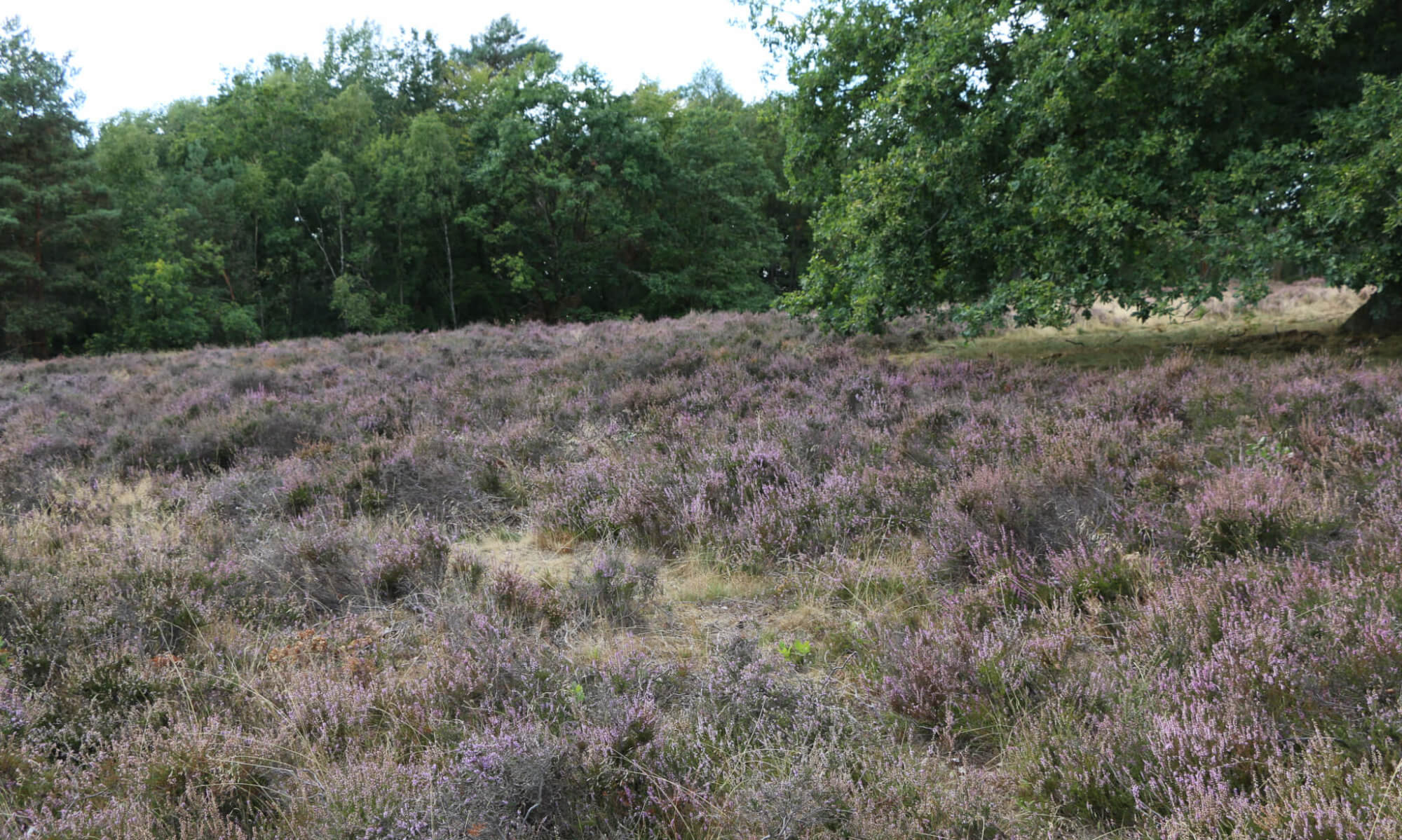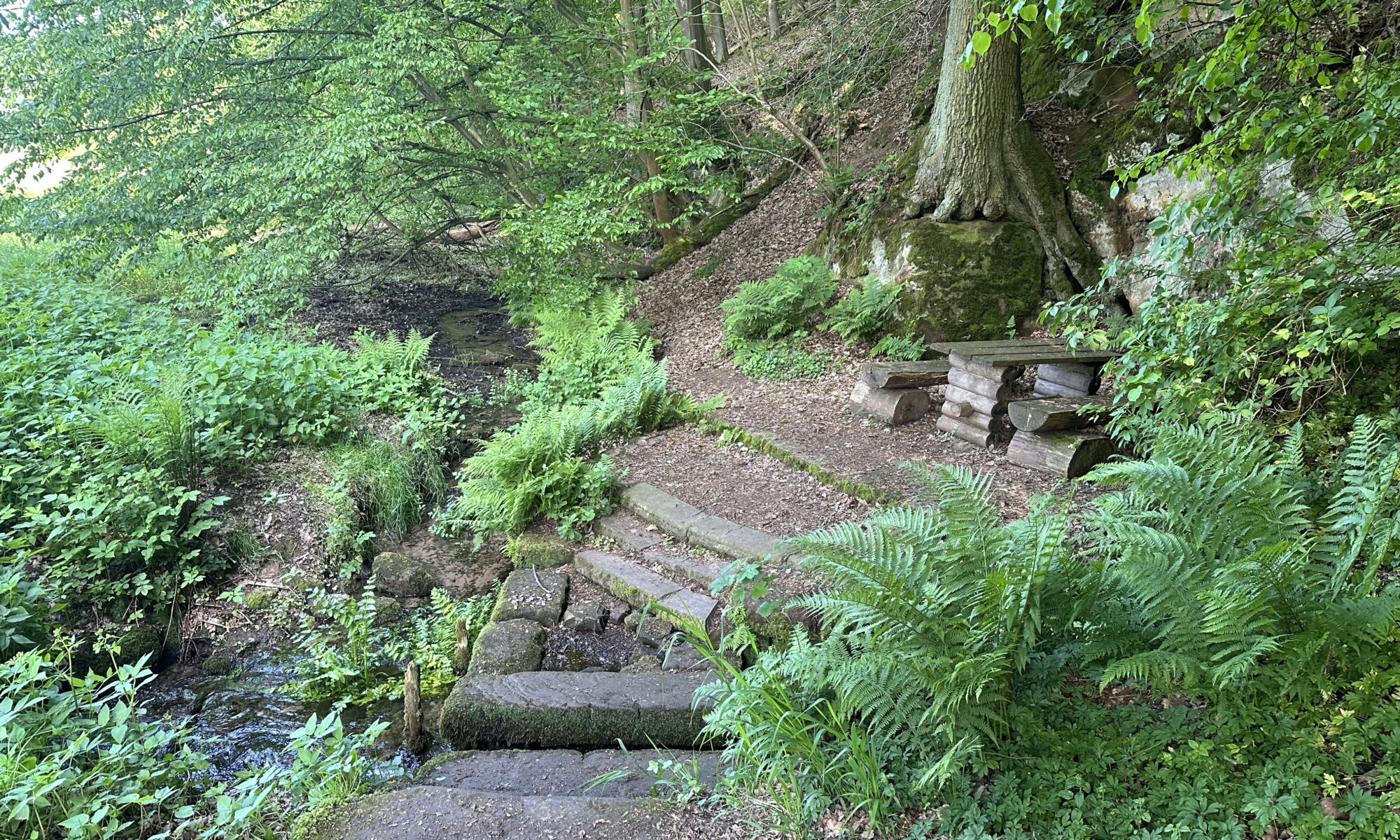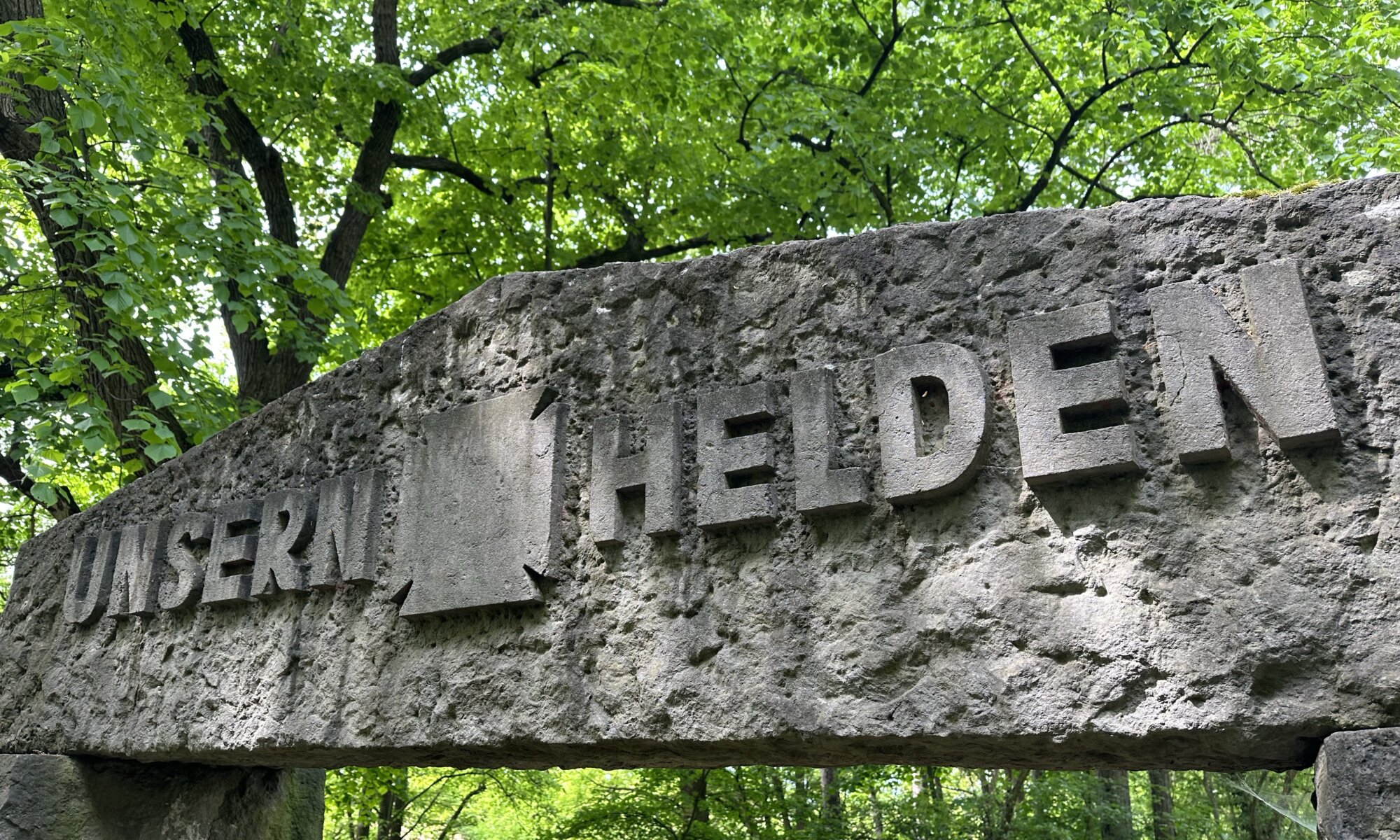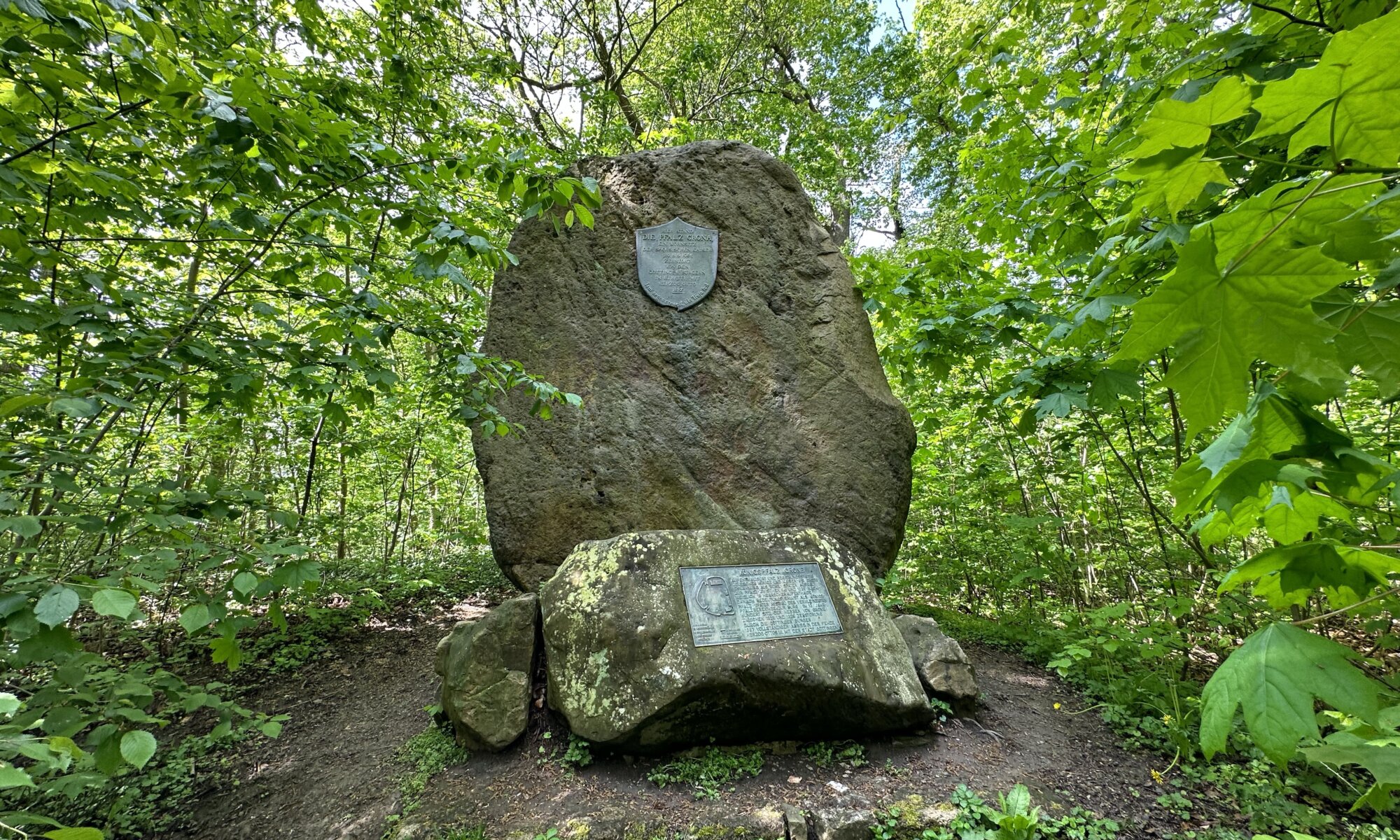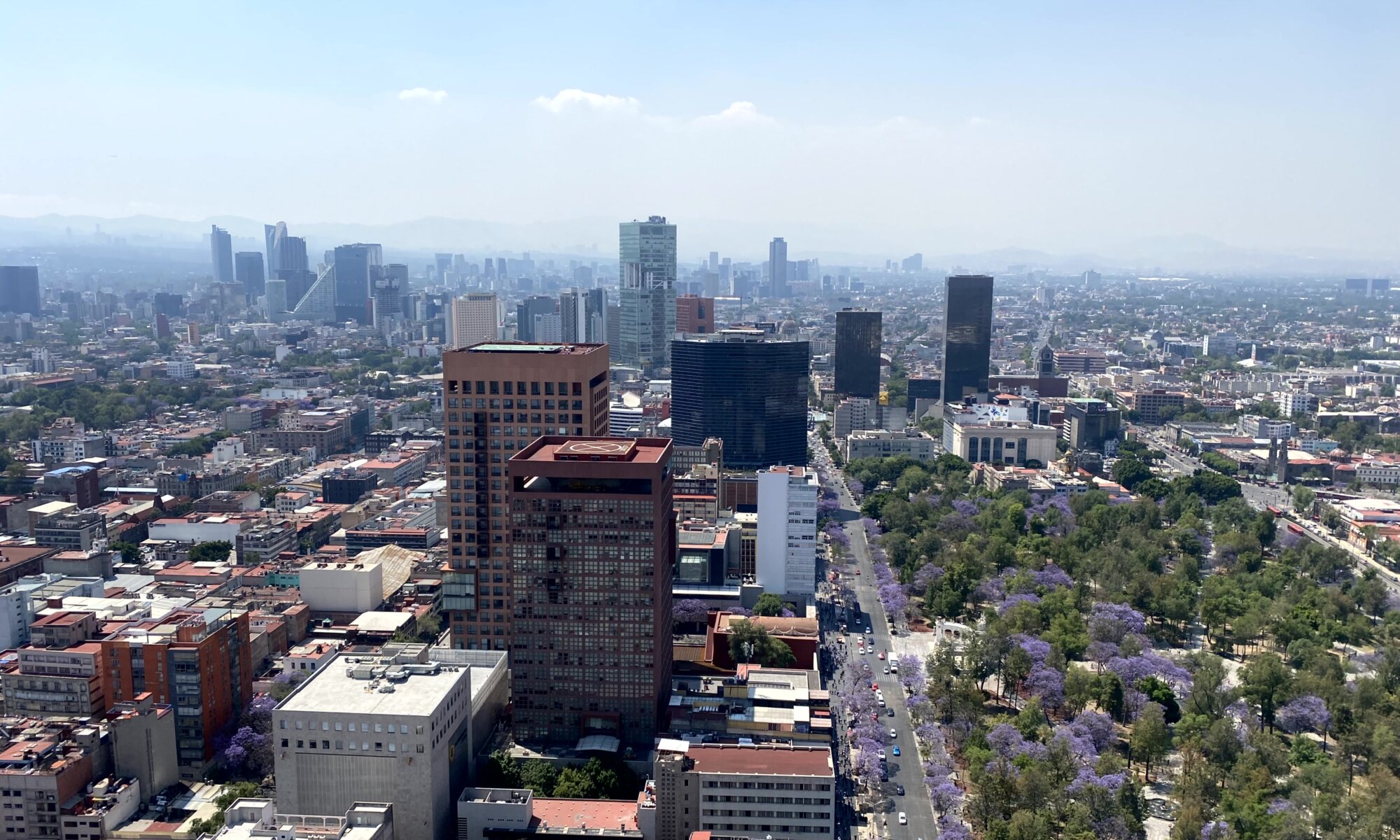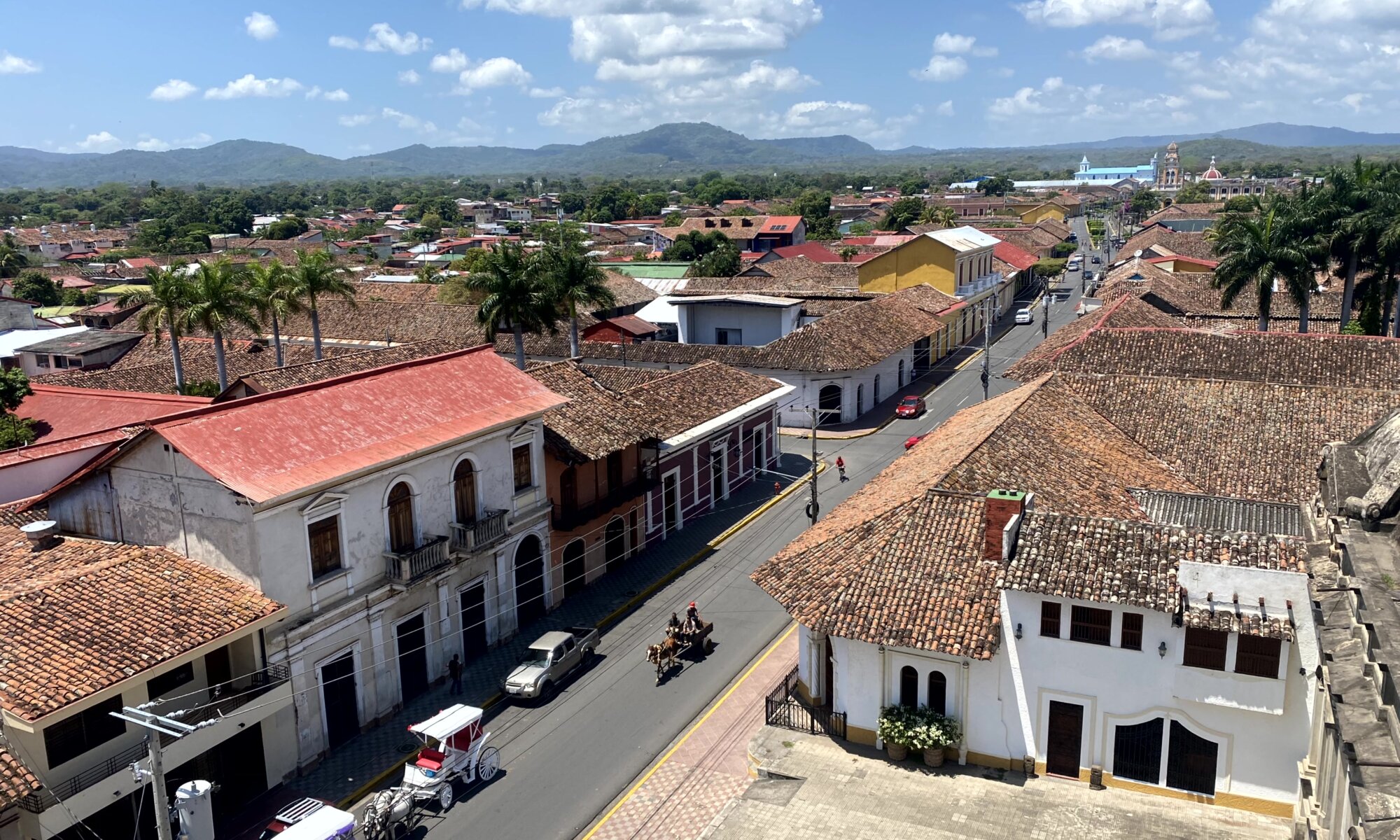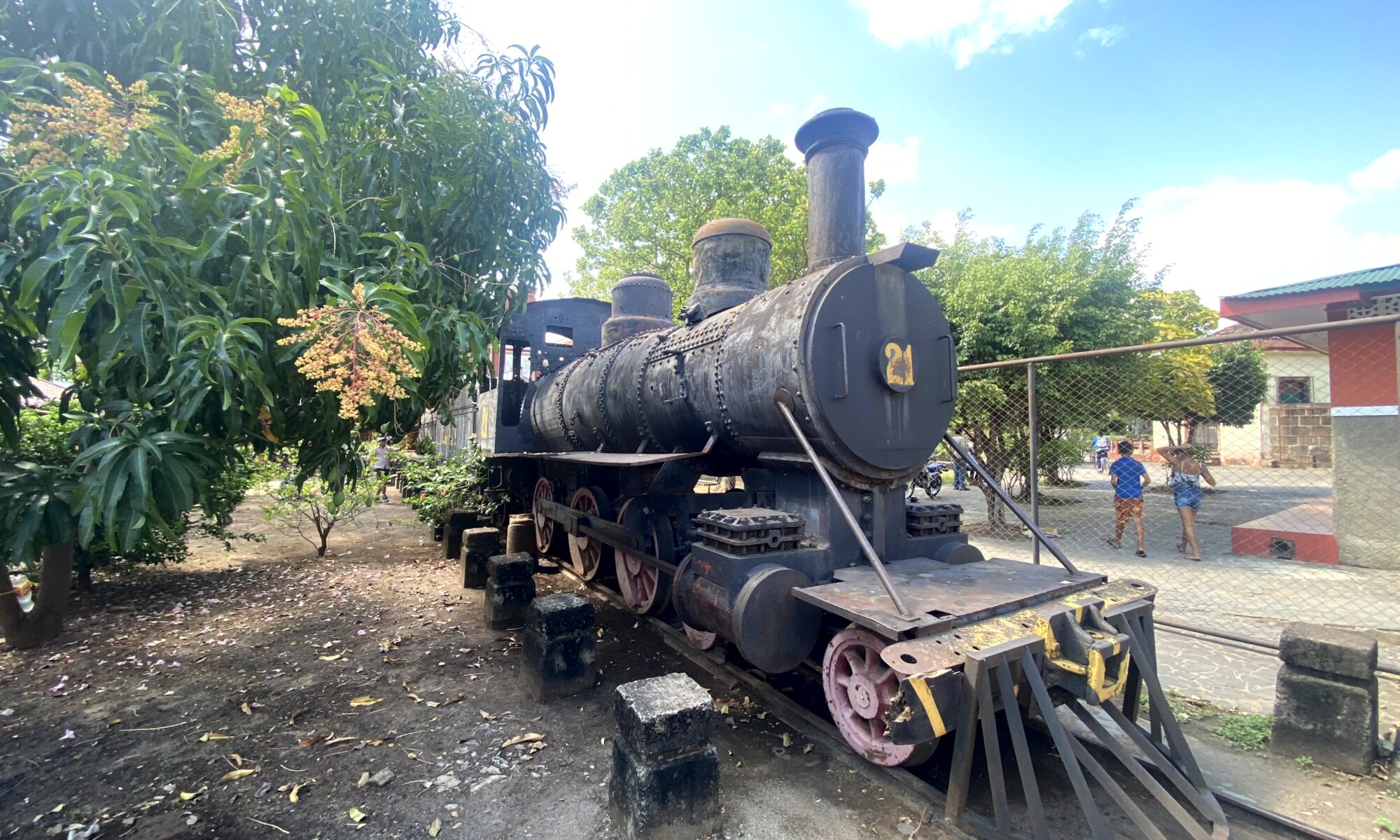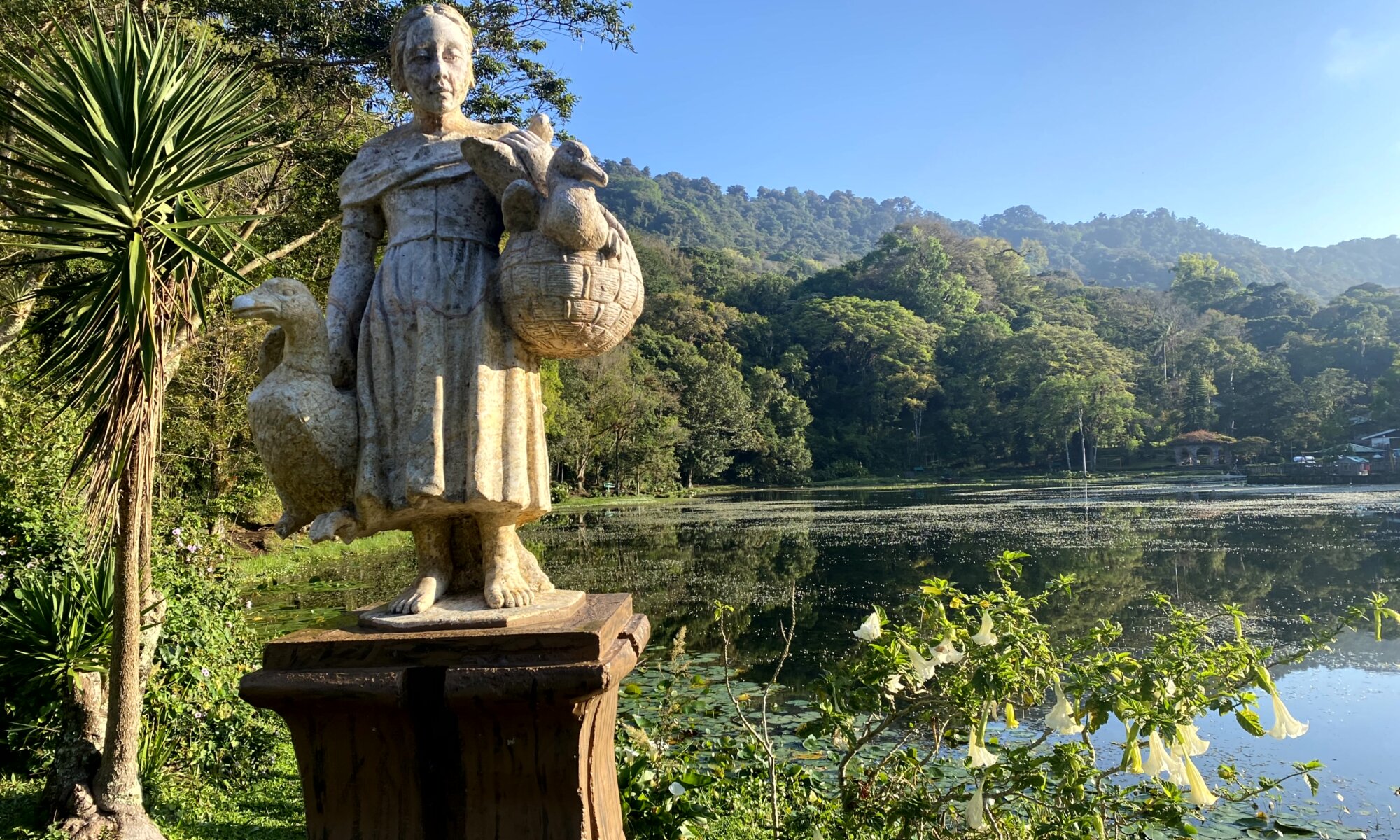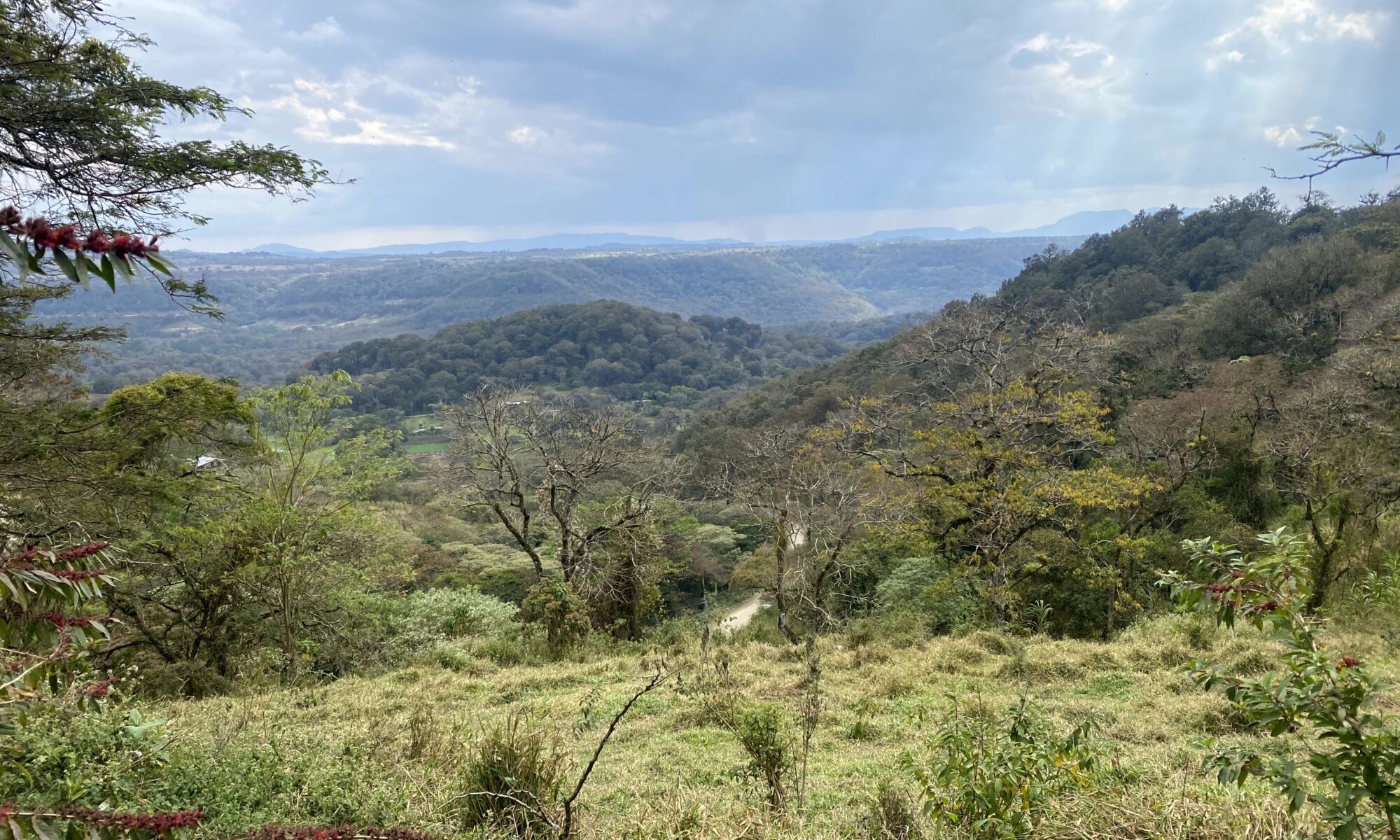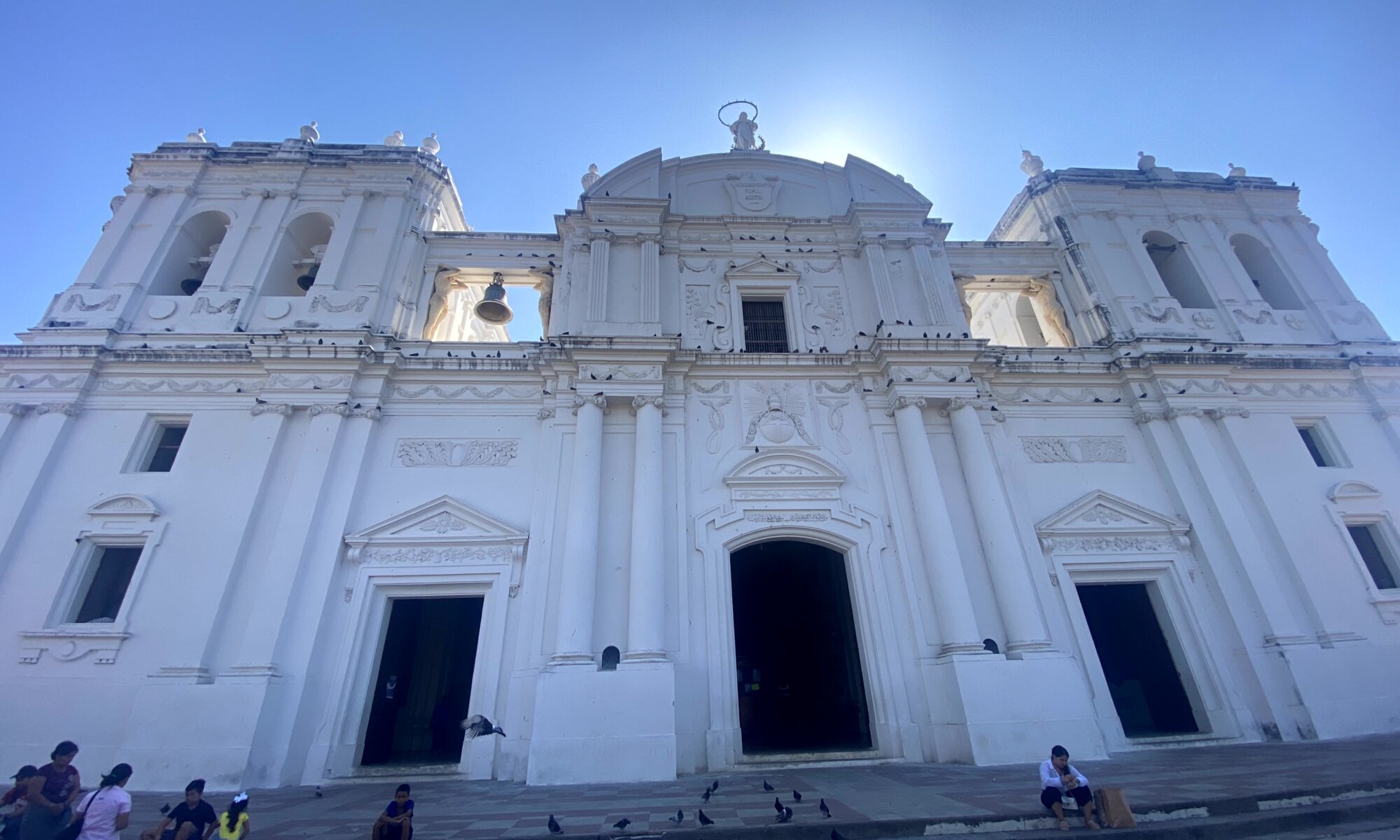The Negenborn-Quelle is a spring at Gleichen, close to the village of Benniehausen. Its name refers to nine springs (negen born) that have been there in the past. If you manage to find the spring in the valley of the river Garte you’ll be at a quite place in nature, with a spring framed in stone. The Negenborn produces around 20 to 30 liters per second which run into the Garte river. A local association, the HURKUT e.V. has placed some seats and a board describing the history of this place close to the Negenborn.
Continue reading “The Nymph of the Negenborn”Stumpfe Eiche
Today Weende is a city quarter of Göttingen, Germany. It was an independent community until 1964 and as such it was (and it is still) remembering its fallen soldiers in both World Wars. In 1956 the stonemason August Voss had created a memorial made of sandstone which was placed in a small forest in a region called Stumpfe Eiche (after the former local name vor der stuven Eichen, referring to stubs of oaks once standing there). It is today a bit hidden, but you can see steps leading you from the street level into the forest. There the memorial is surrounded by seats. It is a nice place, but a problematic memorial.
Continue reading “Stumpfe Eiche”Pfalz Grona
In former times the kings and emperors in Germany didn’t have permanent seats, they had royal palaces spread out over their realm and were travelling between them. From 915 to 1387 one of these places called Königspfalz or Kaiserpfalz was located on the territory of Göttingen, the Pfalz Grona (also known as Burg Grona). It is one of the roots of the city quarter Grone (even as today it belongs to the Weststadt) and kings and queens, emperors and empresses were enjoying their stays there – but it is mostly forgotten. There are only street names remembering the past (Pfalz-Grone-Breite, Burg Grona, Unter der Pfalz) and a memorial stone hidden in the forest on top of the Hagenberg mountain.
Continue reading “Pfalz Grona”Torre Latinoamericana
The Torre Latinoamericana (or short Torre Latino) can be found in the Centro Histórico of the Ciudad de México, close to the Palacio des Bellas Artes and the Alameda Central park. It was the first skyscraper of the city with a height of more than 181 meters and 44 floors. Until 1972 it was the highest building of CDMX and still today it is seen by the locals as a symbol of Mexican success. From the outside and also by the design of the roof terrace the tower reminds one strongly to the Empire State Building of New York, but I enjoyed the views much more from the Torre Latino.
Continue reading “Torre Latinoamericana”Nuestra Señora de Las Mercedes
The Catholic church La Merced is one of the most iconic buildings of Granada, Nicaragua. That is mostly because of the centuries old Baroque-style facade of the building, it is an important cultural heritage of the city. La Merced (or Nuestra Señora de Las Mercedes) was built in 1534 and razed by pirates in 1655. In 1781 the tower was added in a different architectural style; it was destroyed during the Nicaraguan civil war in 1854.
Continue reading “Nuestra Señora de Las Mercedes”No hay trenes a Granada
The state railway of Nicaragua (Ferrocarril de Nicaragua, FCN) existed between 1877 and 1996. The main track was from Corinto at the Pacific ocean to Granada at the Lago Cocibolca. From there, goods could be shipped via the Suan Juan river to the Atlantic ocean – a coast to coast connection. But there were also tracks to León, Masaya, Chinandega and San Juan del Sur. In 2001 also the last private railway closed down and there are no trains running through Nicaragua anymore.
Continue reading “No hay trenes a Granada”La Niña de los Gansos
The Gänseliesel is the icon of my hometown, Göttingen (Germany). It is located at the central market place in front of the old town hall and was placed there in 1901. The statue plays an important role in celebrations, especially when somebody receives a PhD from the local university: he then has to bring her flowers and kiss her. What only few people know is, that the Gänseliesel has a doppelgänger at Nicaragua.
Continue reading “La Niña de los Gansos”Miraflor
The Área Protegida Miraflor northeast of Estelí, Nicaragua, is on the one hand a nature protection zone with beautiful forests and on the other hand an area of rural farming. Not too many tourists find their way on the non-paved roads to this special area of the country. Temperatures are different to those in the lower regions, infrastructure is less good – but therefore you can experience the rural life and try the products produced here.
Continue reading “Miraflor”White cathedral
At the central square of León, Nicaragua, you’ll find the Real e Insigne Basílica de la Asunción de la Bienaventurada Virgen María – the Baroque style cathedral completely painted in white to protect against the sun. It was finished in the year 1860 and is today a UNESCO world heritage site. The cathedral is beautifully decorated outside and inside; it contains an impressive large Way of the Cross and is the burial place for several important poets, including the famous Rubén Darío.
Continue reading “White cathedral”Cocodrilos
The Reserva Natural Isla Juan Venado is a nature protection zone close to Las Peñitas, Nicaragua. Rivers running in parallel to the beach create a long-stretched island that is used by an endless number of turtles to lay their eggs. Along the rivers you’ll find a vast mangrove forest that gives a home to many different species; lots of birds, iguanas, crabs, fishes jumping out of the water to hunt insects and crocodiles.
Continue reading “Cocodrilos”